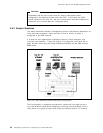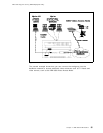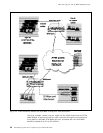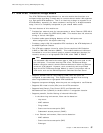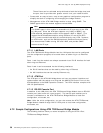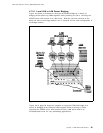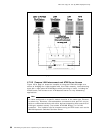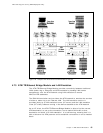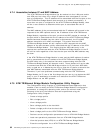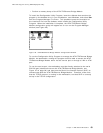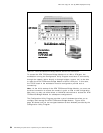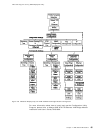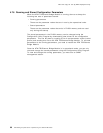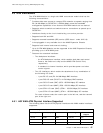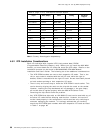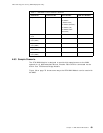This soft copy for use by IBM employees only.
4.7.4 Association between IP and MAC Address
The ATM TR/Ethernet Bridge Module can be reached via four LAN ports and/or
one ATM port, but it has only a single IP address that is assigned to it at the
time of configuration. This IP address will be associated with the first port on the
ATM TR/Ethernet Bridge Module that connects to a network successfully. If
more than one port is configured for the ATM TR/Ethernet Bridge Module, there
will be a race condition to determine which port is associated with the IP
address.
The MAC address of the port associated with the IP address will be used in the
response to the ARP requests sent to the IP address of the ATM TR/Ethernet
Bridge Module, regardless of the port on which the ARP request is received. If
the port which is associated with the IP address of the ATM TR/Ethernet Bridge
Module becomes disabled (say the cable is disconnected), the IP-to-MAC
address association will remain unchanged. This means that the ATM
TR/Ethernet Bridge Module will still respond to ARP requests with the MAC
address of the port that was initially associated with the IP address of the ATM
TR/Ethernet Bridge Module. This ensures that the ARP table entry in the
stations that communicate with the ATM TR/Ethernet Bridge Module via the IP
will still be valid regardless of the fact that the port with that MAC address may
be down.
If the ATM TR/Ethernet Bridge Module is reset and the MAC address of another
port is associated with the IP address of the ATM TR/Ethernet Bridge Module,
the ARP table entry in the stations that were communicating with the ATM
TR/Ethernet Bridge Module will become invalid. Those stations will not be able
to communicate with the ATM-LAN Bridge module via IP until their ARP table
entry is aged-out or is deleted by the user to allow the IP station to discover the
new MAC address associated with the ATM TR/Ethernet Bridge Module.
Therefore, if you have problems communicating with the ATM TR/Ethernet
Bridge Module via IP, one of the first things that you can do is to delete the ARP
entry in your IP workstation to enable it to rediscover the ATM TR/Ethernet
Bridge Module via the ARP process.
4.7.5 ATM TR/Ethernet Bridge Module Configuration Utility Program
The Configuration Utility Program is a DOS/Windows-based application that
enables a user to modify the ATM TR/Ethernet Bridge Module′s configuration
parameters, to change the operating code, and to use minimal mode. The
following is the list of the functions that can be performed using the
Configuration Utility Program:
•
Create a bridge profile
•
Edit a bridge profile
•
View a bridge profile
•
Save a bridge profile to the hard disk
•
Delete a bridge profile from the hard disk
•
Send a bridge profile to the ATM TR/Ethernet Bridge Module
•
Retrieve current configuration parameters from an ATM-LAN Bridge Module
•
Load new operational parameters from an ATM-LAN Bridge Module
•
View vital product data (VPD) for an ATM TR/Ethernet Bridge Module
•
Erase the configuration for an ATM TR/Ethernet Bridge Module
62 ATM Workgroup Solutions: Implementing the 8285 ATM Switch



